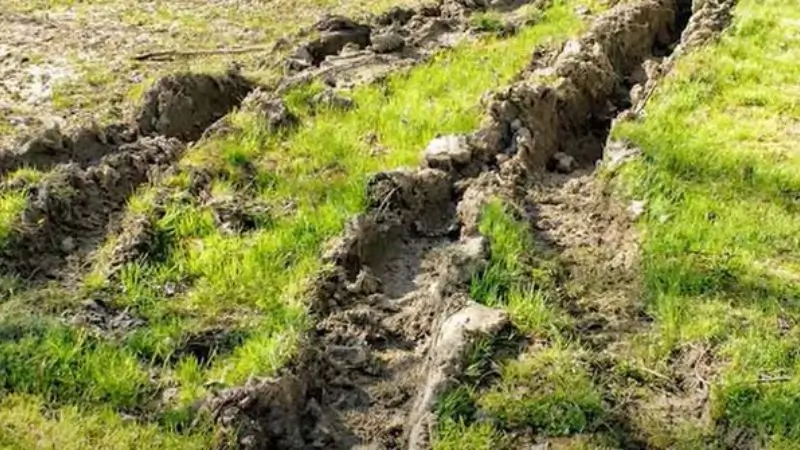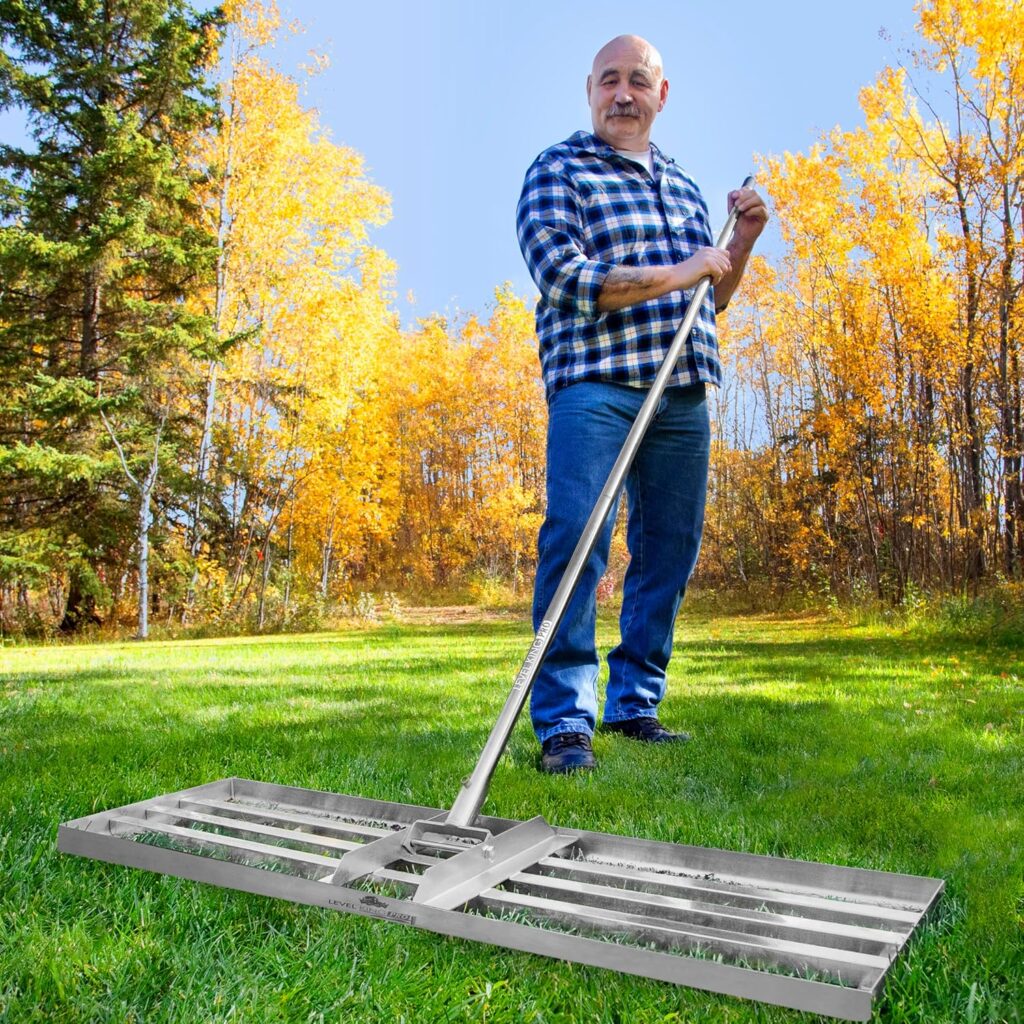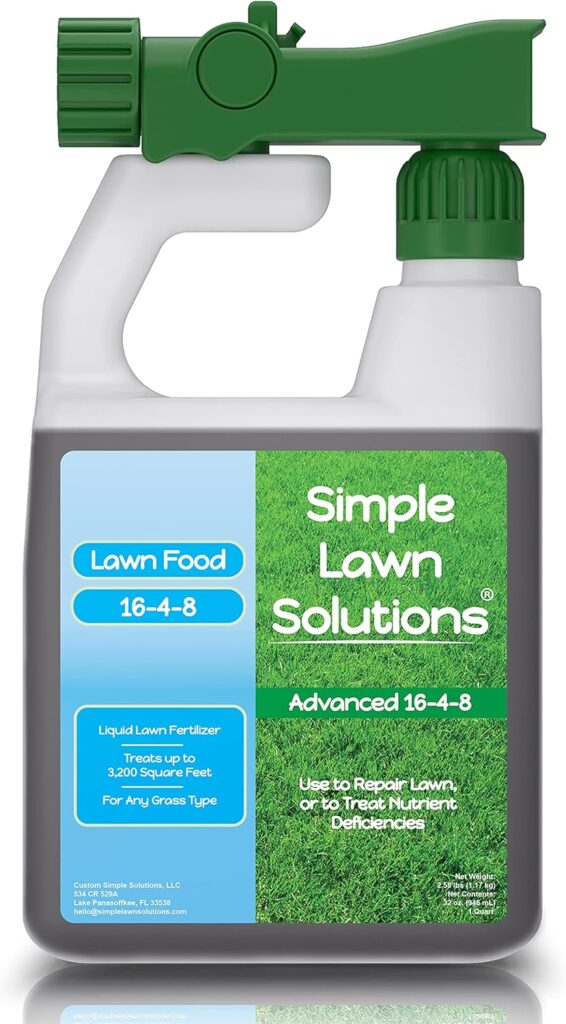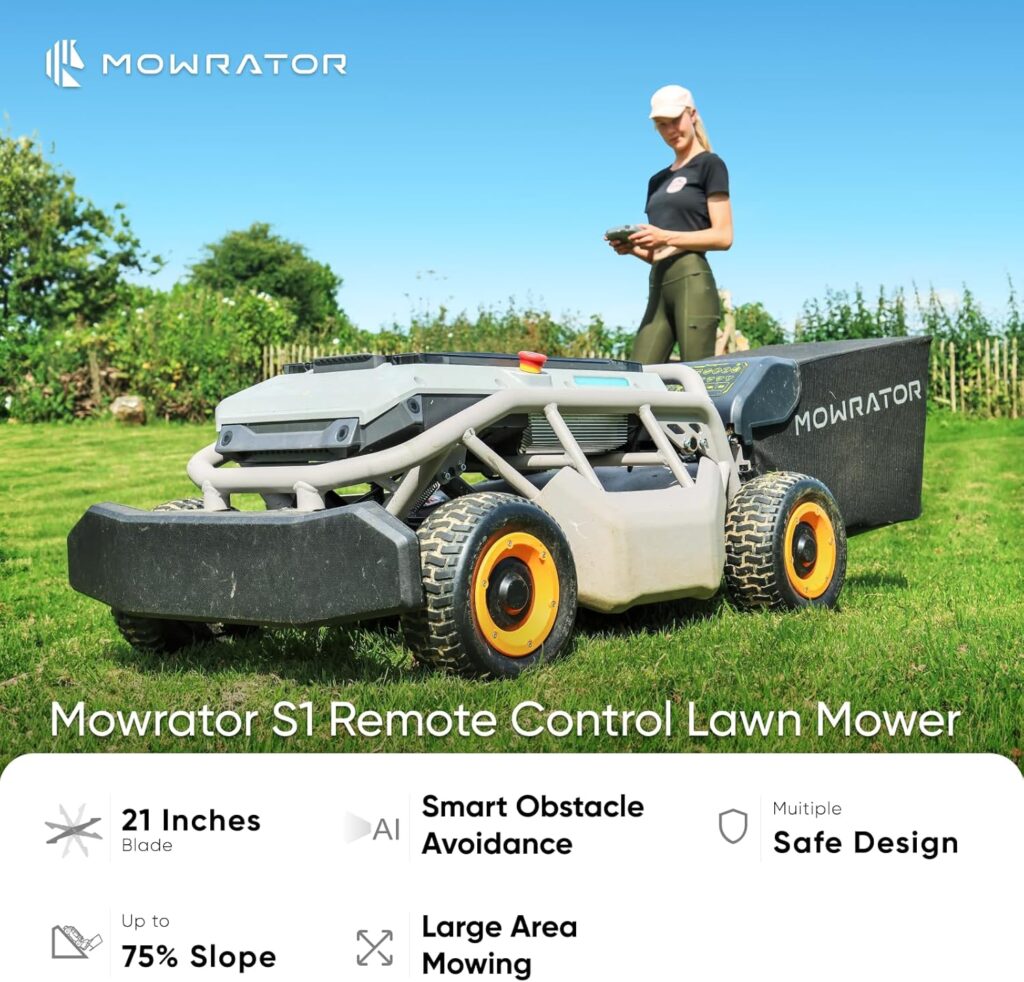Tire tracks can leave your yard looking uneven and messy, especially after rain or heavy traffic. Learning how to fix tire ruts in lawn will help you restore your lawn’s smooth, green appearance without expensive landscaping help.
With a few simple tools and some patience, you can easily repair tire ruts in lawn and make it look fresh again.
Tire ruts not only spoil the look of your yard but also harm the grass roots underneath. The compacted soil prevents air, water, and nutrients from reaching your lawn.
Luckily, even deep lawn damage from tires can be repaired using easy do-it-yourself methods.
Before we learn how to fix ruts in grass, it is important to know what tire ruts are.
What are Tire Ruts?
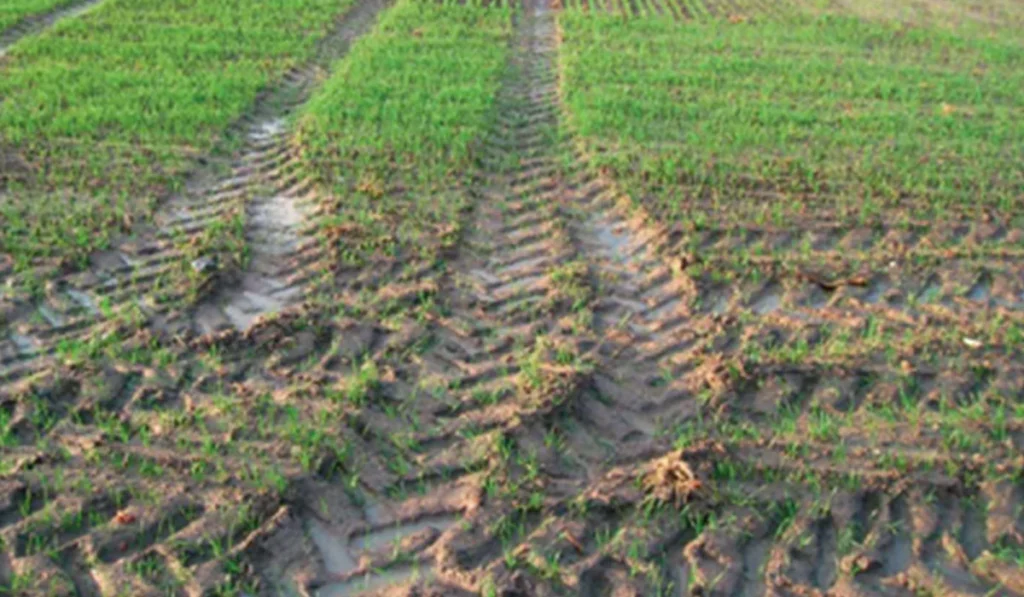
Tire ruts are the sunken tracks or grooves left on the lawn after a vehicle passes over soft or wet ground. When the soil is damp, the weight of the tires presses down and compacts it.
Over time, these grooves harden, creating uneven surfaces that make mowing and walking difficult.
You are likely to notice these marks after parking on wet grass or driving across the yard during landscaping work.
While shallow ruts may seem harmless, deeper ones can suffocate your turf and cause bare patches.
That’s why learning how to fix ruts in grass early prevents long-term damage.
5 Main Causes of Tire Ruts in Lawn
Before learning how to fix tire ruts in lawn, it is imperative to understand what causes them in the first place.
Identifying the main reasons behind those grooves ensures you prevent them from happening again.
Here are the most common causes that lead to lawn damage from tires.
1. Wet or Soft Soil Conditions
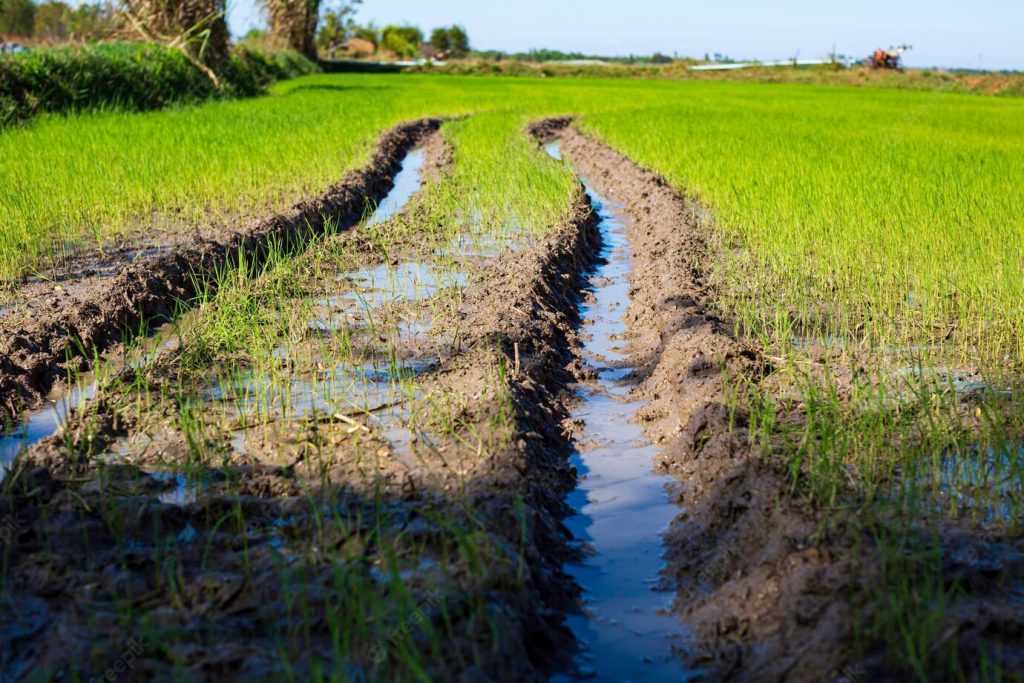
One of the biggest causes of tire ruts is driving over wet or soft soil. When the ground is soaked after rain or watering, it becomes weak and unable to support heavy weight.
Tires press into this soft surface, leaving deep impressions that later harden when the soil dries.
If you drive over the same spot repeatedly, these tracks can become deeper and more noticeable.
To avoid lawn repair after tires, wait until the ground is firm before moving vehicles across the yard. This simple precaution saves time and effort in future repairs.
2. Heavy Vehicle Traffic
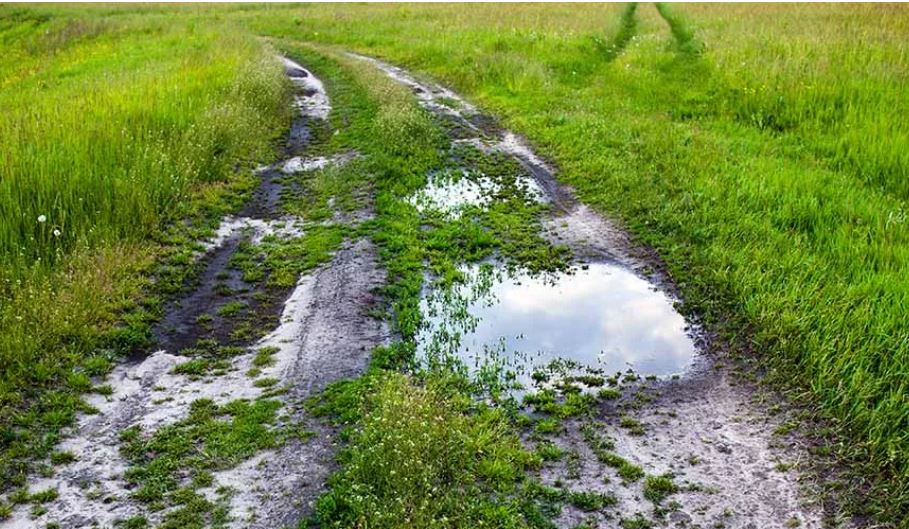
Frequent movement of vehicles, such as cars, mowers, or delivery trucks, compacts the soil over time. This repeated pressure squeezes out air and moisture, making the ground too hard for grass roots to thrive.
Eventually, these compacted areas develop visible ruts that disrupt your lawn’s natural shape.
If you often park on the grass or drive across it for convenience, this can quickly lead to damage. Reducing traffic in these areas helps minimize the need to fix ruts in yard frequently.
3. Poor Lawn Drainage
Lack of proper drainage keeps water trapped near the surface, creating soft, muddy spots. When vehicles roll over these areas, tires easily sink and form ruts.
Over time, constant moisture weakens soil structure and damages grass roots.
Installing proper drainage channels or aerating your yard improves water flow and prevents standing water. It’s an effective way to avoid repair tire ruts in lawn due to soggy soil.
4. Thin Grass Cover or Weak Turf
A lawn with thin or patchy grass provides little protection against tire pressure.
Thick, healthy turf helps distribute weight evenly across the soil surface. Without it, the ground becomes more vulnerable to damage from tires, especially during wet conditions.
Regular overseeding and fertilizing strengthen the lawn and make it more resistant to compression. This small step reduces the chances of lawn damage from tires and makes your yard easier to maintain.
5. Soil Compaction from Poor Maintenance
Soil compaction doesn’t always come from cars alone. It can also result from heavy foot traffic or infrequent aeration.
Compacted soil loses its natural fluffiness, becoming dense and hard to absorb water. This weakens root growth and increases the likelihood of rut formation even with light tire movement.
Regularly aerating your lawn every season helps relieve this pressure. It’s a key preventive step before you even need to learn how to fix ruts in grass.
Read: Best Xeriscape Ideas to Transform Your Yard
How to Fix Tire Ruts in Lawn
Repairing tire ruts may look challenging, but with the right steps, your lawn can recover quickly. Whether the tracks are shallow or deep, you can restore your grass without needing a professional.
Follow this simple guide to learn to fix tire ruts in the lawn and keep your yard looking smooth and healthy again:
- Assess the depth of the ruts
- Using a garden fork or spade, loosen the compacted soil
- Level up the soil using a mix of compost and topsoil
- If need be, reseed the area using high-quality grass
- Using the back of a leveling rake, gently press the soil and water thereafter
- Prevent future tire ruts by not driving over the area until the ground is compact enough
Now, let’s look at each of the above steps separately.
Assess the Depth of the Ruts
Start by examining how deep the tire tracks are. Shallow ruts (less than 2 inches deep) are easier to fix, while deeper ones may require additional soil and reseeding.
Identifying the depth helps you choose the right method to repair tire ruts in lawn effectively.
Walk through the affected area and check if the grass roots are still visible. If they are intact, you can simply loosen the soil instead of reseeding completely. This step prevents unnecessary work and keeps your turf’s natural look intact.
Loosen the Compacted Soil
Use a garden fork or spade to gently lift the compacted soil along the rut. This allows air, water, and nutrients to reach the grassroots again. Be careful not to tear the healthy grass around the rut.
If the soil feels hard, lightly moisten it with water to make lifting easier. This process helps reduce lawn damage from tires and prepares the area for leveling and reseeding.
Level the Surface
After loosening the soil, add a mix of topsoil and compost to fill the rut until it’s level with the rest of your lawn. Use a rake to smooth out the surface gently.
For shallow ruts, you can press down the lifted soil with your foot to make it even.
If your lawn has thick turf, lift the existing grass gently before adding soil beneath it. Doing this allows you to fix ruts in yard without replacing the grass entirely.
Reseed the Area (If Needed)
For deeper ruts or areas where the grass has died, sprinkle high-quality grass seed over the repaired spot.
Choose a seed type that matches your existing lawn for a seamless look. Lightly rake the area to cover the seeds with soil, then water thoroughly.
Keep the soil consistently moist until new grass sprouts. This ensures successful growth and faster recovery from lawn repair after tires.
Press and Water the Repaired Spots
After filling and leveling – using a leveling rake for lawn (pictured above ⬆), gently press the soil using the back of a rake or by walking over it with flat shoes. This helps the soil settle properly and prevents uneven patches later.
Once done, water the area deeply to encourage root growth.
Consistent watering over the next few weeks helps the new grass establish well. Avoid driving or walking over the repaired areas until the grass thickens.
Prevent Future Tire Ruts
The best way to avoid repeating the repair process is through prevention. Avoid driving over your lawn when the ground is wet or after heavy rain.
Regular aeration, proper drainage, and maintaining thick turf can all protect against lawn damage from tires.
If you often need to park on grass, consider installing pavers or gravel paths in those spots. These provide strong support and reduce pressure on the lawn, saving you from frequent how to fix ruts in grass.
Additional Tips to Maintain a Healthy Lawn After Fixing Tire Ruts
Now that you’ve learned how to fix tire ruts in lawn, it’s important to maintain your yard so the problem doesn’t return.
A few consistent care habits will keep your grass strong and your soil balanced.
These extra steps help your lawn recover faster and resist damage from vehicles or heavy equipment.
Aerate Your Lawn Regularly
Aeration helps loosen compacted soil and improves airflow to the roots. Doing it once or twice a year allows nutrients and water to penetrate deeply.
Lawn aeration is one of the most effective ways to prevent lawn damage from tires and heavy traffic.
You can use a manual aerator or rent a core aeration machine for larger yards. Over time, aerated soil becomes softer and more resilient, reducing the need to repair tire ruts in lawn again.
Keep Your Lawn Well-Drained
Standing water weakens soil and makes it prone to tire ruts. To improve drainage, check for low spots that collect water and fill them with soil. Also, ensure your gutters and downspouts direct water away from grassy areas.
Good drainage helps your lawn stay dry and firm, even after heavy rain. This simple habit minimizes how often you’ll need to fix ruts in yard caused by soggy conditions.
Strengthen Grass Growth Through Fertilizing
Healthy, dense turf provides a natural cushion against compression. Apply a balanced lawn fertilizer, such as the Advanced 16-4-8 Balanced NPK Lawn Food (pictured above ⬆) during the growing season to promote strong root growth.
Strong roots keep the soil tight and protect it from rut formation.
Combine fertilizing with overseeding thin areas for an even, full appearance. This enhances your lawn repair after tires and keeps your yard lush year-round.
Mow at the Right Height
Cutting grass too short weakens the turf and exposes soil to direct damage.
Always maintain the ideal mowing height for your grass type. Taller blades help shade the soil, retain moisture, and prevent compaction.
Keep mower blades sharp to avoid tearing the grass. This small step goes a long way in maintaining the results of your how to fix ruts in grass.
For the best lawnmower, check out Mowrator’s Battery-Powered Remote Controlled S1 4WD 56V12Ah Lawn Mower (pictured above ⬆) on Amazon.
Limit Traffic on the Lawn
Try to reduce how often vehicles or heavy equipment pass over grassy areas. If you must drive across your yard, do so when the soil is dry and firm.
Marking a dedicated path with pavers or gravel can help protect the rest of your lawn.
Avoid repeated pressure on the same spot to prevent rut formation. Protecting your lawn’s surface saves you time and effort on future lawn repair after tires.
Frequently Asked Questions (FAQs)
Q: Can grass grow back after tire ruts?
A: Yes, grass can regrow after tire ruts if the roots aren’t completely damaged. For shallow ruts, simply loosening the soil and watering regularly will encourage new growth. For deeper ruts, you may need to reseed to achieve full lawn repair after tires.
Q: How long does it take to fix tire ruts in lawn?
A: The repair time depends on how deep the ruts are. Shallow ruts can recover in 1–2 weeks, while deeper ones with reseeding might take 3–4 weeks. Consistent watering and proper soil care speed up the recovery process after you repair tire ruts in lawn.
Q: What tools do I need to fix tire ruts in grass?
A: Basic lawn tools such as a garden fork, rake, topsoil, compost, and grass seed are enough. For more compacted soil, you might need an aerator to loosen the ground. These simple tools make it easy to fix ruts in yard without hiring a landscaper.
Q: Should I use sand or soil to fill tire ruts?
A: Use topsoil or a mix of topsoil and compost, not sand. Sand can harden and prevent root growth, especially in clay-heavy soil. The right soil mix ensures healthy turf regrowth after lawn damage from tires.
Q: How can I prevent future tire ruts?
A: Avoid driving or parking on grass when it’s wet, and keep your lawn aerated and well-drained. Strengthening grass roots with fertilizer and regular mowing also helps. Following these habits minimizes how often you’ll need to learn how to fix ruts in grass again.
To Wrap Up
Learning how to fix tire ruts in lawn is an easy and rewarding process when done with patience and care. Tire tracks may seem unsightly, but they don’t have to ruin your lawn’s beauty permanently.
By loosening compacted soil, filling in low spots, and reseeding where necessary, you can repair tire ruts in lawn and restore a smooth, green surface.
Prevention plays a major role in keeping your yard healthy. Avoid driving over wet ground, aerate your soil regularly, and strengthen your turf with consistent fertilizing.
These simple practices prevent future lawn damage from tires and keep your grass lush throughout the seasons.
Remember, every homeowner’s lawn faces a few bumps now and then — what matters most is how you respond.
With proper lawn care habits and regular maintenance, you’ll never have to worry about how to fix ruts in grass again.
A beautiful, resilient lawn isn’t about perfection — it’s about consistent attention, gentle repair, and care for nature’s green carpet.
So, again, do you remember how to fix tire ruts in lawn?
In case you’ve forgotten, here is a quick recap:
✅ Assess the damage
✅ Soften the soil
✅ Lift the grass and loosen the soil
✅ Add quality topsoil
✅ Press and level the area
✅ Reseed bare spots
✅ Water consistently
✅ Prevent future tire ruts
By following these simple steps, you can restore your lawn’s smooth, healthy look in no time — and prevent those unsightly tire ruts from returning.
A little care and the right timing can make all the difference for a lush, even lawn!

